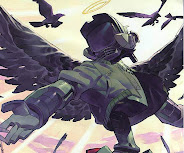I for one think this may be a good idea, both for developers and for my wallet. With longer cycles, developers will really be able to concentrate on one system without having too worry too much and split their attentions. I found two posts that talked about the statement from Nintendo and posted my opinions about it, they are close to the same, but they differ slightly to what the posts are about. The two articles I posted on were called, "Iwata: 4-year Console Cycle 'Too Inflexible,'" and "Nintendo Dismiss four year console cycle." Both of my comments can be seen at the posts themselves as well as below.
Iwata: 4-year Console Cycle 'Too Inflexible'
Comment:
I think that Iwata has the beginnings of the right idea. I think that console life depends more on the games that are out than the hardware that is used. One of the most long lived and highest selling systems is the PlayStation 2. The PS2 had some of the best games ever created. Even now, people still play their PS2's more than some of their newer systems, and it is still one of the highest selling systems even now. The console has been around for about 8 years, and even if they did not have the PS3, I think Sony could still be doing very well in the market. If the right games are made, Nintendo might not have to make new console in 4 years, but ten years is a very long time. I think he might be too optimistic on that one.
In the post you stated, "Everyone knows Wii is significantly less powerful than its competitors." While that is true for sure, it does not seem like that is the most important factor when tracing console life. As I stated before, the PS2 is a lot less powerful than the next-gen consoles, but is still holding its own. The fact that the Wii was released less powerful while the PS2 was an equal when it was released may make a huge difference though.
I'm excited to see what happens!
Nintendo Dismiss four year console cycle
Comment:
I think Nintendo has the right idea. They do not need to plan out a new system, when they have barely tapped into the potential of their existing one. That statement goes for both the DS and the Wii. Also, as a gamer, I enjoy buying systems every 8 to 10 years rather than 4 to 5. So the longer a system is out, the more convenient it is for me.
Also, I do not think that consoles are the main
You stated that Iwata is not, “dismissing the prospect of new systems entirely,” which means that obviously new systems are being thought of, just not imminently. I also think this is the right approach as I do not think it is possible to exhaust all of the possibilities of these new systems in 4 years. Letting the systems go for a longer time allows developers to really invest themselves in a console and make really good games for it, which will, in turn, lengthen the life of the console. Some people may be disappointed to hear this, but I am not so broken up about it. Actually, I am excited to see what happens because of this.







